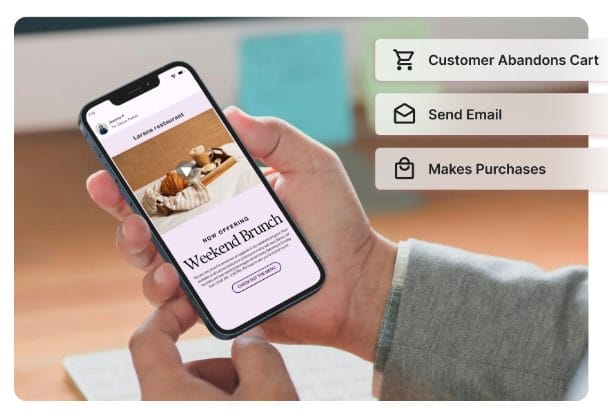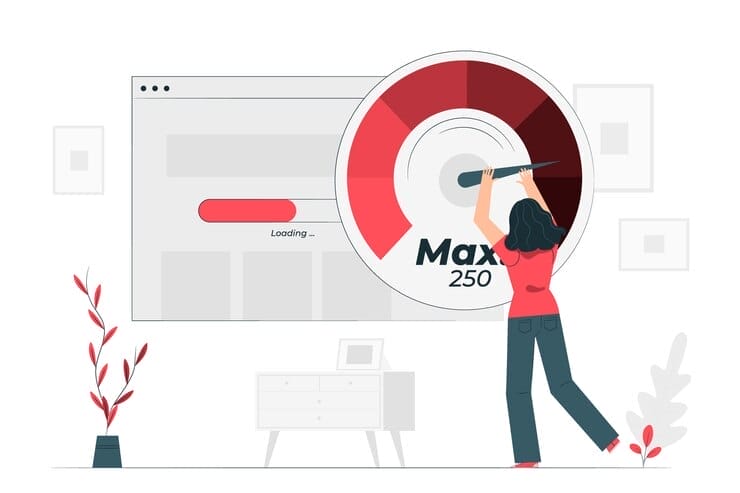What is Drip Marketing?
Drip marketing, also referred to as a drip campaign, is a marketing strategy in which pre-written and automated messages are sent to prospective and existing customers to increase customer engagement and sales. The “drip” part of drip marketing refers to a gradual and consistent stream of messages.
Drip marketing is the practice of automatically sending a predetermined number of emails to your audience at predetermined intervals in response to their activities or status changes. Following significant events or acts, businesses utilize drip marketing to stay in touch with their audience in a tailored and focused manner.
Half of us are on a “never-ending search for products, services, and content to support behavior change.
Accenture, 2018
Why Drip Marketing?

Your company can establish the relationships necessary for its success with drip marketing. You may boost the likelihood that someone will choose you when they are ready to buy by letting potential consumers come to know, like, and trust you through an email series.
Drip campaigns can also be successful because they are targeted and can be customized based on a specific action. More than 90% of shoppers claim they are more inclined to purchase businesses that remember them.
Lets take a look at some of the advantages of drip marketing to get a better a view on why you should use drip marketing.
Advantages of Drip Marketing
#1. Automation

The most noticeable aspect of drip marketing is that it is automated. Drip emails keep you in touch with your customers and ensure you are not forgotten.
The most challenging part of drip marketing is creating a chain of messages. It is better to let your chain work for you once you’ve planned it.
Drip campaign templates are provided by various software, and triggers can be set to detect customer interactions that warrant drip emails.
#2. Lead Nurturing
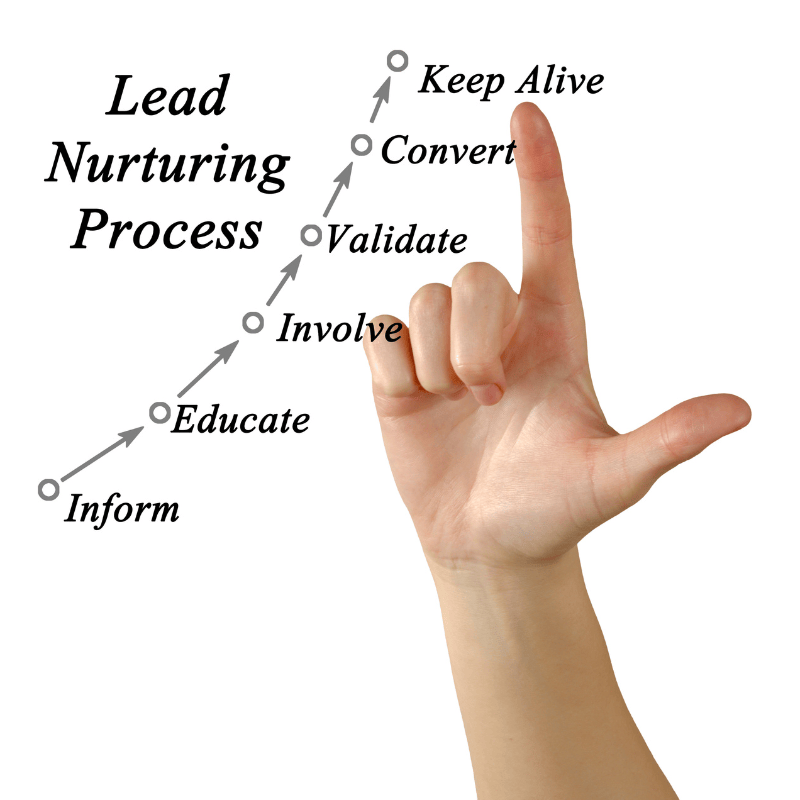
Drip marketing lets businesses stay in touch with their target market in a personalized way.
For example, you sell bespoke suits for men. If you send a cold email about your new claims to a potential customer, he may open it and browse your website. An automated drip campaign will send him a second email to thank him for visiting your website and encourage him to take advantage of a first-timer’s discount, ensuring that it isn’t the last time he thinks of your company. If he tries your product, he will likely purchase from you again.
Nurturing leads and keeping in touch with customers takes more than two emails, so a continuous drip is required to lead sales.
#3. Timely Information

Customers are more likely to buy from businesses that recognize and remember them.
One of the benefits of drip marketing is that each customer receives information relevant to their stage in the sales cycle. The correct data is sent at the appropriate time, from welcome drips, onboarding sequences, and lead nurturing campaigns to new product recommendations.
For example, you would never send a welcome email to an existing customer or a partnership email to a new buyer.
#4. Sales

Drip marketing is essential in helping you increase sales by converting visitors into buyers, increasing repeat purchases, and reengaging a dormant audience.
By communicating your company’s value in drip emails, you establish a relationship with your audience and demonstrate that you are an excellent resource for their needs.
When to Use Drip Marketing

A drip marketing campaign should be used to reach out to your customers on important dates or communicate with an existing or prospective customer based on their behavior.
Examples of Drip Marketing Campaigns
Listed below are some common examples of drip marketing campaigns:
#1. Welcome Messages

When someone new joins your target audience, making an excellent first impression is critical. New customers expect instant confirmation that they have been added to your email list, but you should go above and beyond.
A series of welcome emails show your prospective customer that you are interested in their business. It also allows you to share everything a newcomer to your company needs to know.
You can also use welcome emails to follow up with someone you met, such as at a fashion show, food festival, cake tasting event, sale, etc.
#2. Messages on Special Occasions

While you may not turn these into a series, sending an email on your prospective or existing customer’s birthday, anniversary, holiday, or other relevant events is a great way to reinforce your brand values (and even prompt a purchase).
#3. Educational Messages

You must understand your product, what it does, and how to use it. It is also very critical that your customer understands how to get the most out of their user experience, so any educational media, such as how-to’s, tips, or industry information, can be shared with customers for their benefit. Product information assists customers in determining which solution is best for them.
#4. First Purchase Automation

When someone makes their first purchase from you, it’s an excellent opportunity to appreciate them for choosing your business and remind them of the product’s features and quality.
Provide them with tips on how to get the most out of their purchase and reinforce that they made a good decision. Thanking them at this early stage of your business relationship can make them feel like they are a part of a community.
#5. Product Recommendations

Recommending a complementary item when someone makes a purchase is an excellent way to increase sales. You can include product recommendations in a shipment notification or order confirmation email. You could also follow up a few weeks or months after a purchase to recommend refills or replacement parts.
#6. Reminders for Subscription Renewal
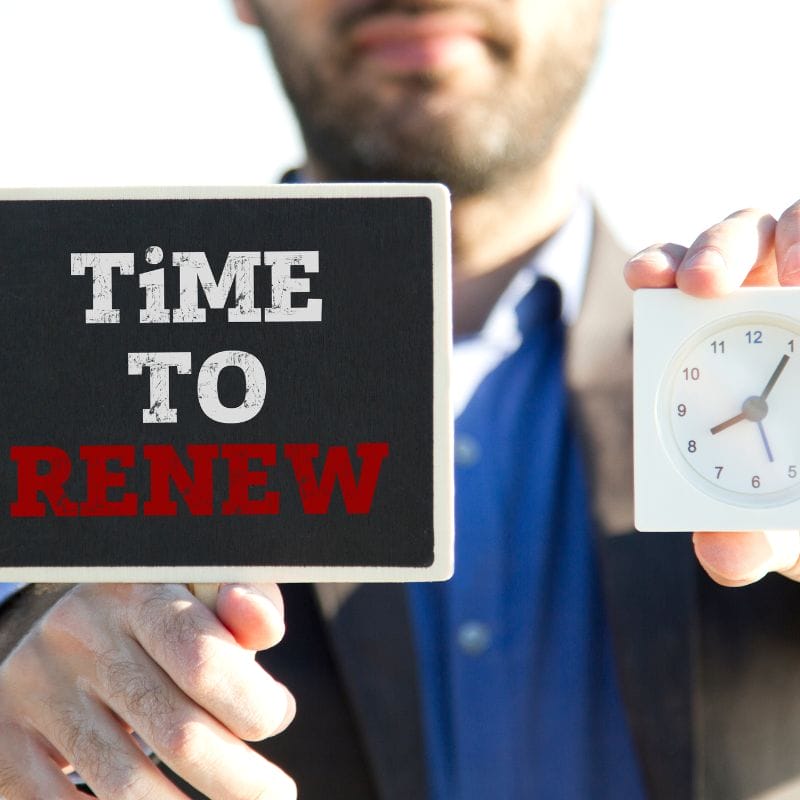
If your company provides a subscription-based product or service, such as a gym or a paid newsletter, a drip campaign is an excellent way to notify your audience when their subscription expires and also remind them of the value you provide and how they have benefited from your services. If possible, entice them with new offerings that are in the works.
#7. Post-Purchase Messages

If you have a customer, you want to keep them! While attracting new customers is important, retaining existing customers is even more critical because they will likely purchase from you in the future. Customers can rest assured that their order has been processed when they receive a purchase confirmation email.
#8. Re-Engagement Messages

If your lead has gone cold, you must reengage them. There are numerous approaches to this, ranging from a casual “Hello there, we have missed you!” to a more formal invitation like “We have a vested interest in your continued banking with us.”
You may also need to retarget your lead if the drip persona that you selected for your lead is slightly off. Re-engagement drip emails are frequently combined with promotions to encourage customers to interact.
#9. Promotional Messages

Everyone enjoys a good sale! Set up a drip campaign to offer your prospects a deal or sale now and then. Some customers are always looking to get the most bang for their buck and will find free trials, promo codes, and temporary markdowns to be enticing and exciting.
#10. Messages about Abandoned Shopping Carts

When online shoppers add something to their cart, they frequently remove it or abandon the purchase altogether. A good abandoned cart email can persuade them to reconsider their purchase. You don’t want to appear too intrusive, be cautious.
For example, if the shopper left a specific suit, you could send an email promoting your entire collection of harmattan wears without mentioning the item they selected.
#11. Unsubscribe Messages

Unsubscribers do not always wish to never hear from you again. Perhaps they want to receive fewer emails from you and follow you on social media. An email with these options or a link to a “Sorry to see you go” webpage may suffice to keep someone from disengaging completely.
A perfect unsubscribe webpage prompts people to consider why they choose to unsubscribe and provides them with the option of receiving fewer emails in the future.
In addition to asking for feedback, you could offer a special “We want you back” incentive if they unsubscribe from your service. You can also contact them again in 3 or 6 months to entice them back.
How to Set Up a Drip Campaign
Follow these steps to set up and manage your drip campaign.
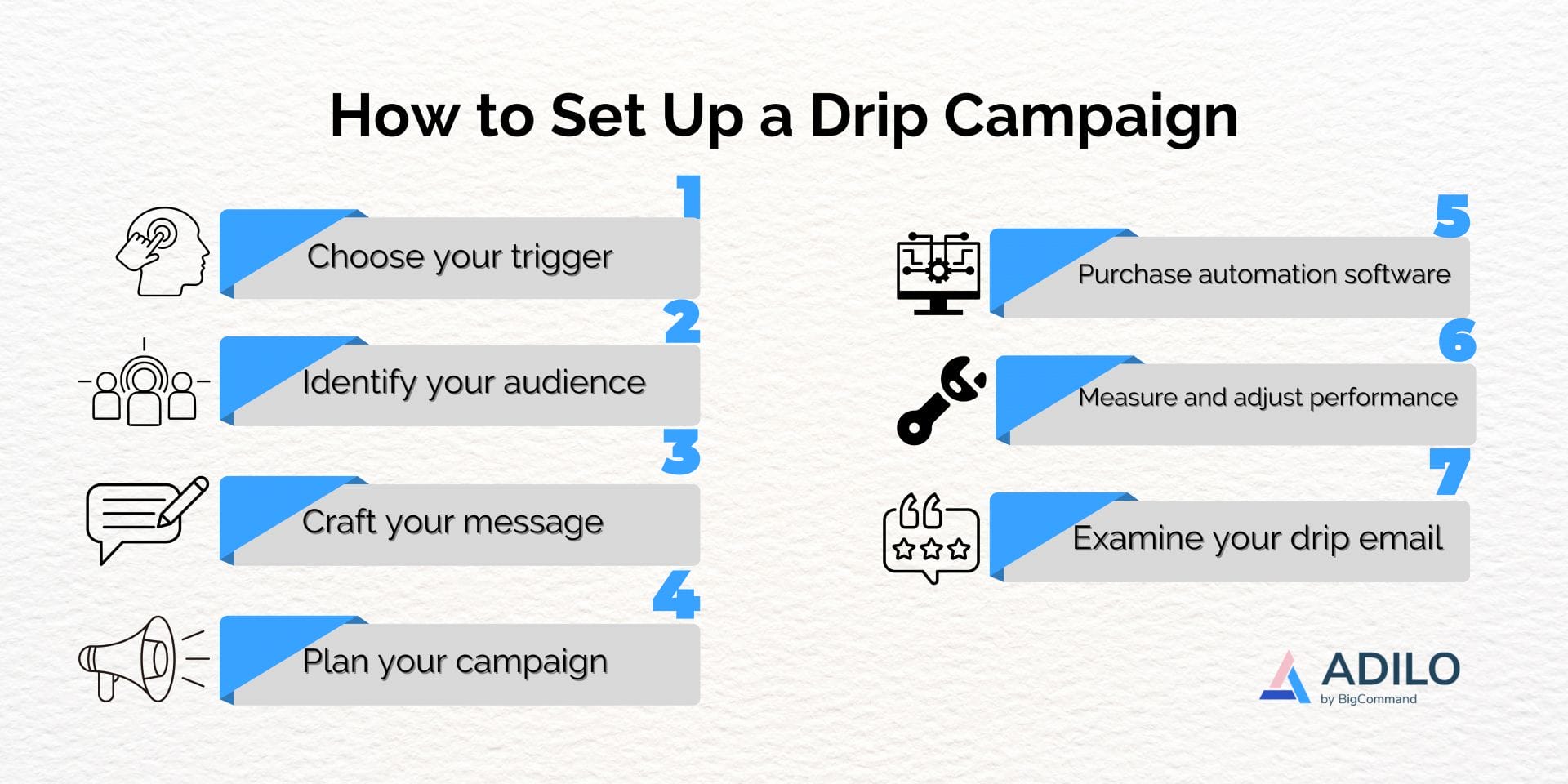
#1. Choose Your Trigger
What specific actions will your drip campaign be based on? What special dates will you like to send particular messages to your prospective or existing customers to show vested interest and care?
#2. Identify Your Audience(s)
Drip campaigns segment your subscriber list and target information to specific customer groups. Therefore, deciding which triggers and groups to use for your drip campaign strategy is crucial. Drips are typically triggered by either an action on your app or a piece of user demographic data. Will your “Welcome to School” drip campaign, for example, reach all new students or only first-year new students?
#3. Craft Your Message
What do you want your customer to understand? What steps do you want your customer to take? In line with your response, write a clear and SMART copy maintaining the brand’s voice and message.
#4. Plan Your Campaign
How many emails will you send? When will you send them? And in what order will you send them? Determine your email campaign’s workflow, from first contact through sale to support. Determine the goals of your campaign so that your triggers correspond to your organization’s goals.
#5. Purchase Automation Software
Use a tool like MailChimp or HubSpot to regularly create, automate, and send automated messages to your target audience.
#6. Performance Should be Measured and Adjusted
Keep track of your campaigns’ click and conversion rates, and get ready to make changes based on what you discover.
#7. Examine Your Drip Email
As your offerings evolve, your copy may become outdated. Review your drip campaigns regularly to ensure they remain relevant.
READ ALSO: Demand Generation Funnel: The 2022 Playbook
You love this Article, right? Get more Updates via Adilo’s Twitter Page

